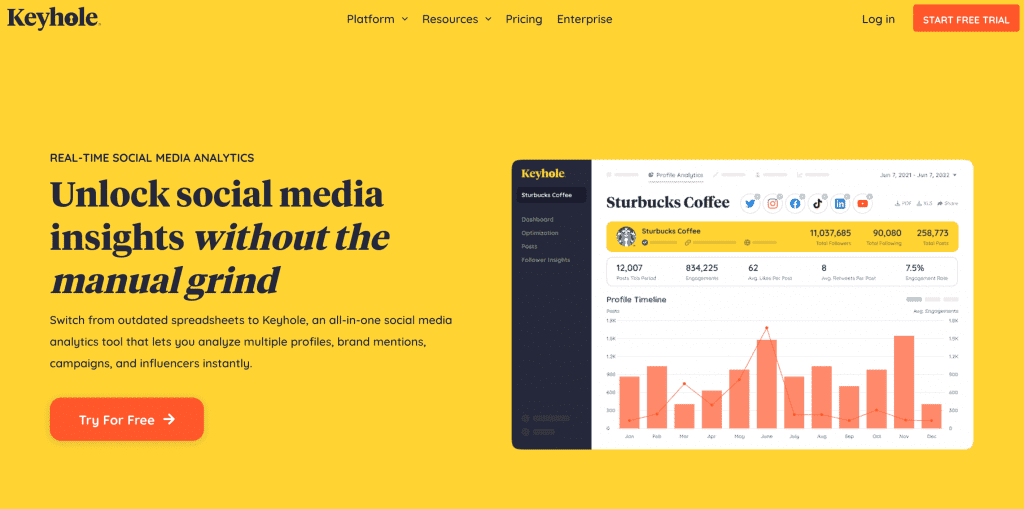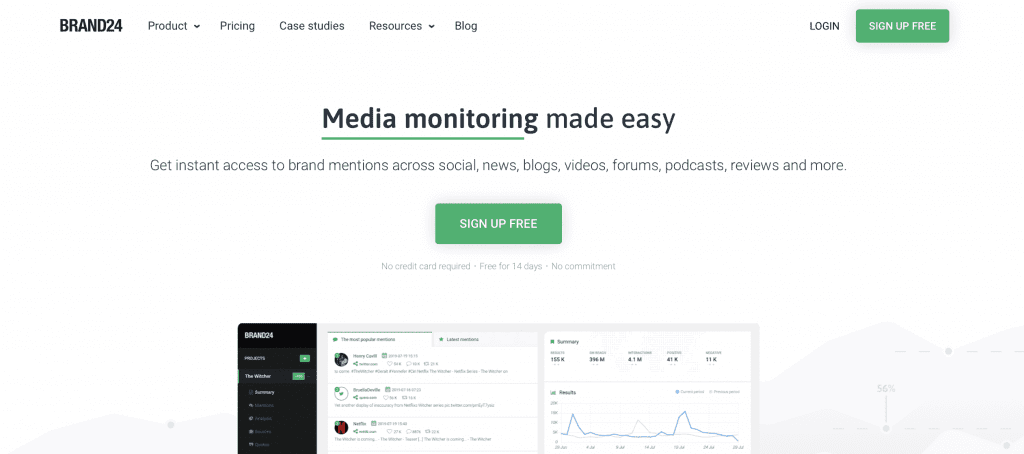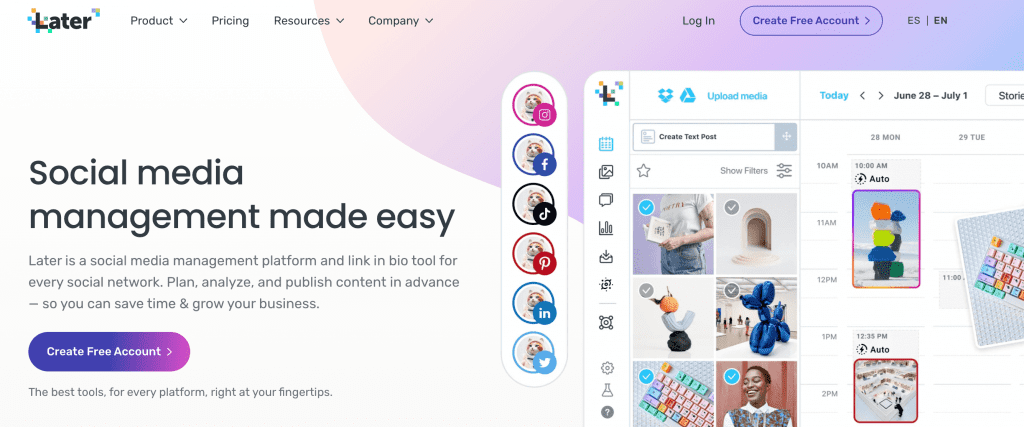Before you roll your eyes at this in disbelief, Instagram hashtags actually work! They bring exceptional reach to you.
This engagement tool is not just for Twitter alone but spans its effectiveness to Instagram. People use tons of hashtags each day, unraveling tons of opportunities to get closer to your leads.
That’s why tracking Instagram hashtag analytics can prove to be a game changer while chalking out your content strategy. But this is not as simple as it seems.
Adding irrelevant hashtags to your posts can do you more harm than good. That’s why knowing what hashtags to use and how they are effective for your overall performance is a must.
Tread on further with us as we guide you through the details. Let’s get started with the basics.
Table of Contents
- What is Instagram hashtag analytics?
- What are the benefits of tracking Instagram hashtag analytics?
- What Instagram hashtag analytics metrics should you measure?
- How to track Instagram hashtag analytics using Keyhole?
- Top 3 Instagram hashtag analytics tools to boost your visibility
- 10 Expert tips to leverage Instagram hashtag analytics
- Conclusion
- Frequently Asked Questions
What is Instagram hashtag analytics?
You must have noticed popular brands add several types of hashtags on Instagram. They can be either brand names or campaign hashtags. Some brands also employ location hashtags to lure in audiences from specific geography.
So before we dig into analytics, let’s first identify different types of hashtags that you can use.
1. Content hashtags: These hashtags are directly related to the content of your post. For example, if you’re posting about food, you might use hashtags like #foodie, #foodiesofinstagram, or #foodiesofinsta.
2. Niche/interest hashtags: These hashtags are used within a particular industry or by people who share similar interests. For instance, if you’re into photography, you might use hashtags like #photographylovers, #photographyeveryday, or #photographyislife.
3. Location hashtags: These are specific to a particular location or geographic area. For example, if you’re traveling to New York City, you might use hashtags like #nyc, #newyorkcity, or #nycfood.
4. Event hashtags: These hashtags are related to a specific event or occasion. For example, if you’re attending a music festival, use hashtags like #Oscars, #SXSW, or #BurningMan.
5. Brand hashtags: These hashtags are unique to a brand or business and are used to promote their products or services. For example, Nike uses the hashtag #justdoit, and Coca-Cola uses #shareacoke.
6. Campaign hashtags: These hashtags are created for specific marketing campaigns or promotions. For example, a company running a holiday sale might use the hashtag #holidaydeals or #blackfriday to promote their campaign.
7. Community hashtags: These are used by a specific community or group of people with similar interests or affiliations. For example, #bookstagram is a popular hashtag book lovers use to connect and share their reading experiences.
8. Personal hashtags: These are unique to an individual and are used to express their personality, interests, or experiences—for example, #wanderlust, #foodlover, or #fitnessjourney.
We bet you are scratching your head in a daze with so many options. How do you know what’ll work best for you?
Enter Instagram hashtag analytics! It shows you the unfiltered data and insights after analyzing the performance of hashtags on Instagram.
Tools like Keyhole’s hashtag analytics gather information on how often a hashtag is used, how much engagement it generates, and which hashtags drive the most followers. This data can help you make informed decisions about which hashtags to use, track the success of your hashtags over time, and optimize your hashtag strategy to reach a larger audience and grow your Instagram account.
But there’s more to the picture! Is this worth the drill?
What are the benefits of tracking Instagram hashtag analytics?
Look at some of the unfair advantages you can reap from Instagram hashtag analytics.
Increased visibility: Instagram hashtag analytics can help you identify the most popular and relevant hashtags in your niche, which can help your posts reach a larger audience. By using hashtags commonly searched for and used by others, you can increase the visibility of your posts and attract more engagement, such as likes, comments, and followers.
Targeted audience: Detailed hashtag analytics can help you find and connect with a specific audience with similar interests or passions. Using hashtags relevant to your content, you can reach people interested in the same topics, hobbies, or communities as you. This can help you grow your Instagram followers and engage with like-minded individuals on Instagram.
Data-driven decision making: Hashtag analytics provides data and insights about the performance of your hashtags, such as how often they are used, how much engagement they generate, and how they impact your reach and impressions. This data can help you decide which hashtags to use, when, and how to optimize your hashtag strategy for better results.
Campaign tracking: If you’re running a marketing campaign or promoting a specific event or product on Instagram, hashtag analytics can help you track the success of your campaign hashtags. You can monitor the performance of your hashtags over time, measure their effectiveness in driving engagement or conversions, and adjust your campaign strategy accordingly.
Content inspiration: Instagram hashtag analytics can also help you discover new hashtags that are relevant to your interests or niche, which can inspire your content creation. By exploring popular hashtags used by others in your field, you can get ideas for new content, social media trends, or themes to incorporate into your posts.
But don’t jump with excitement just yet. Incorporating just any high-volume hashtags won’t do. Because the higher the volume of hashtags, the chances are that your posts will add up to the humongous pile.
Let’s see what other analytics you should keep in check.
What Instagram hashtag analytics metrics should you measure?
Understanding the following metrics can help you optimize your hashtag strategy, increase your visibility, and effectively engage with your target audience on Instagram.
No. of posts and users: These metrics measure the popularity or frequency of a hashtag’s usage on Instagram. It provides insights into how often a hashtag is used by others, which can indicate its popularity and potential reach. Higher-popularity hashtags are used more frequently but may also have more competition.
Engagement rate: This metric measures the level of engagement (likes, comments, shares) your posts receive when using a particular hashtag. It indicates how well a hashtag resonates with your audience and drives engagement on your posts. Higher engagement rates indicate that the hashtag effectively generates your audience’s interaction and interest.
Reach and impressions: These metrics measure the number of unique users (reach), and total views (impressions) your posts receive when using a specific hashtag. Reach represents the number of individual users who have seen your post, while impressions represent the total number of times your post has been viewed. Higher reach and impressions indicate that the hashtag is helping your posts to reach a larger audience.
Trending status: This metric indicates whether a hashtag is trending or popular on Instagram. Many users widely use and discuss trending hashtags, often related to current events, holidays, or popular topics. Using trending hashtags can increase the visibility of your posts and help you ride the wave of popular conversations.
Hashtag performance over time: This metric tracks the performance of a hashtag over time, showing how its popularity, engagement rate, reach, or impressions may have changed over time. This can help you identify trends, patterns, or seasonality in hashtag performance and adjust your hashtag strategy accordingly.
Audience insights: Some hashtag analytics tools provide insights into the demographics, interests, or behaviors of users engaging with your posts using a particular hashtag. This information can help you better understand your audience and tailor your content or marketing efforts to their preferences and interests.
Sentiment: The sentiment behind Instagram hashtags refers to the emotional tone or attitude associated with a hashtag, such as positive, negative, or neutral. It influences how users perceive and interpret posts using those hashtags and can help businesses choose appropriate hashtags for their brand voice and messaging. Hashtag sentiment is important for social listening and understanding public opinions about a brand or topic.
Now that you know what to track, let’s move on to how to track.
How to track Instagram hashtag analytics using Keyhole?
Haven’t used Keyhole yet? It is a powerful tool that can help you understand how your hashtags perform on Instagram and make data-driven decisions to optimize your hashtag strategy. Here’s how you can do so.
Step 1: Sign up for a free trial: Go to Keyhole’s website and sign up for a free trial account.
Step 2: Add trackers: Under #Listening & Campaigns, click on Add New Tracker. Enter the hashtag you want to track in the search bar. You can track multiple hashtags at once by separating them with commas.
Step 3: Monitor hashtag performance: Once your hashtag search is created, Keyhole will provide insights on various metrics like popularity, engagement, reach, impressions, and more. You can view the performance of your hashtags over time through easy-to-understand charts and graphs.
Step 4: Analyze hashtag data: Dive into the hashtag data provided by Keyhole and gain insights into which hashtags are performing well and driving engagement on your Instagram posts. You can also track the sentiment behind hashtags to understand the emotional tone associated with them.
Step 5: Optimize your hashtag strategy: Use Keyhole’s hashtag analytics insights to optimize your hashtag strategy. Experiment with different hashtags, monitor their performance, adjust your hashtag usage to increase your visibility and engagement and grow your Instagram presence.
You can also add your Instagram account and analyze your profile analytics on Keyhole. Go ahead and explore its free trial.
Top 3 Instagram hashtag analytics tools to boost your visibility
Looking for options? Here are the top 3 Instagram hashtag analytics tools you can start with.
1. Keyhole

Keyhole is a comprehensive hashtag analytics tool that provides in-depth insights into hashtag performance, including popularity, engagement, reach, impressions, sentiment analysis, and more. You can also schedule unlimited posts with Keyhole’s publishing feature.
It offers real-time monitoring and analysis of hashtags on Instagram, Twitter, Facebook, and other social media platforms. Keyhole offers features like competitor analysis, hashtag tracking over time, and customizable reports, making it a top choice for Instagram hashtag analytics.
2. Brand24

Brand24 is another popular hashtag analytics tool that provides insights into hashtag performance, sentiment analysis, social media monitoring, and more. It offers real-time tracking of hashtags on Instagram and other social media platforms and features like competitor analysis, influencer identification, and customizable reports.
3. Later

Later is a popular social media scheduling tool offering basic hashtag analytics for Instagram. It provides insights on hashtag performance, reach, impressions, and engagement and recommendations for popular hashtags based on your content. While it may have some of the advanced features of Keyhole or Brand24, it’s a good option for users looking for a simple and budget-friendly solution for Instagram hashtag analytics.
Overall, Keyhole is considered one of the top Instagram hashtag analytics tools due to its comprehensive features, real-time monitoring, and in-depth insights. However, the best tool for you will depend on your specific needs, budget, and preferences. Exploring different options is recommended, and choosing the one best fits your requirements.
10 Expert tips to leverage Instagram hashtag analytics
Want the most out of Instagram analytics? Here are expert tips for you.
1. Use a hashtag analytics tool: Utilize a hashtag analytics tool like Keyhole to track and analyze the performance of your hashtags, including metrics like popularity, engagement, reach, and impressions.
2. Research and choose relevant hashtags: Conduct thorough research to identify hashtags relevant to your content and audience. Use a mix of popular, niche, and long-tail hashtags to target different segments of your audience.
3. Monitor hashtag performance over time: Keep an eye on the performance of your hashtags over time to identify trends, patterns, or seasonality. Adjust your hashtag strategy accordingly to optimize performance.
4. Please pay attention to engagement rate: Focus on hashtags that drive higher engagement rates, as it indicates that the hashtags resonate with your audience and generate interaction on your posts.
5. Analyze competition level: Consider the competition level of hashtags, as lower competition hashtags may offer better visibility and discoverability for your posts.
6. Follow trending hashtags: Keep an eye on them relevant to your content and join conversations around them to increase your visibility and engagement.
7. Test and optimize hashtag combinations: Experiment with different hashtag combinations to find the ones that work best for your content and audience. Test different variations and track their performance to optimize your hashtag strategy.
8. Keep an eye on audience insights: Utilize audience insights provided by hashtag analytics tools to understand your audience’s demographics, interests, and behaviors using specific hashtags. Tailor your content and marketing efforts accordingly.
9. Avoid banned or spammy hashtags: Be cautious of using banned or spammy hashtags that may negatively impact your account’s visibility or engagement. Always research and verify your hashtags to ensure they comply with Instagram’s guidelines.
10. Stay up-to-date with hashtag trends: Stay updated with the latest hashtag trends, popular topics, and events to stay relevant and engage with your audience in real time.
Incorporating these expert tips into your Instagram hashtag analytics strategy can help you optimize your hashtag usage, increase your visibility and engagement, and grow your presence on Instagram.
Conclusion
In conclusion, understanding and leveraging Instagram hashtag analytics can be a game-changer for content creators and marketers alike. With Keyhole’s free trial, you can gain valuable insights into the performance of your hashtags, optimize your Instagram strategy, and drive more engagement and followers.
Whether you’re a budding influencer, a small business owner, or simply someone who loves sharing content on Instagram, Keyhole’s user-friendly platform makes it easy to unlock the power of hashtags. So why wait? Take advantage of Keyhole’s free trial and level up your Instagram game today!
Related Articles:
Top Instagram Story Analytics For Leveling Up Your Gram Game
The Ultimate Instagram Analytics Guide To Master Your Metrics
Frequently Asked Questions
1. How can Instagram hashtag analytics help me grow my Instagram account?
Instagram hashtag analytics can provide insights into the performance of your hashtags, including how often they are used, how much engagement they generate, and which hashtags are driving the most followers. By analyzing this data, you can optimize your hashtag strategy, use more effective hashtags, and increase your reach and engagement on Instagram, ultimately helping you grow your Instagram account.
2. Can I use Instagram hashtag analytics for my business or personal brand?
Absolutely! Instagram hashtag analytics can be used by businesses, influencers, and individuals alike. If you have a business account or use Instagram for personal branding, understanding the performance of your hashtags can help you optimize your content strategy, reach your target audience, and drive more engagement and followers.
3. How can Instagram hashtag analytics help me track the success of my marketing campaigns?
If you're running marketing campaigns on Instagram, using hashtag analytics can help you measure the effectiveness of your hashtags in driving engagement and conversions. By analyzing the performance of your campaign hashtags, you can see which hashtags are resonating with your audience, which are driving the most engagement, and which are converting into sales or other desired outcomes. This data can help you optimize your campaign strategy and make data-driven decisions to improve your marketing efforts on Instagram.